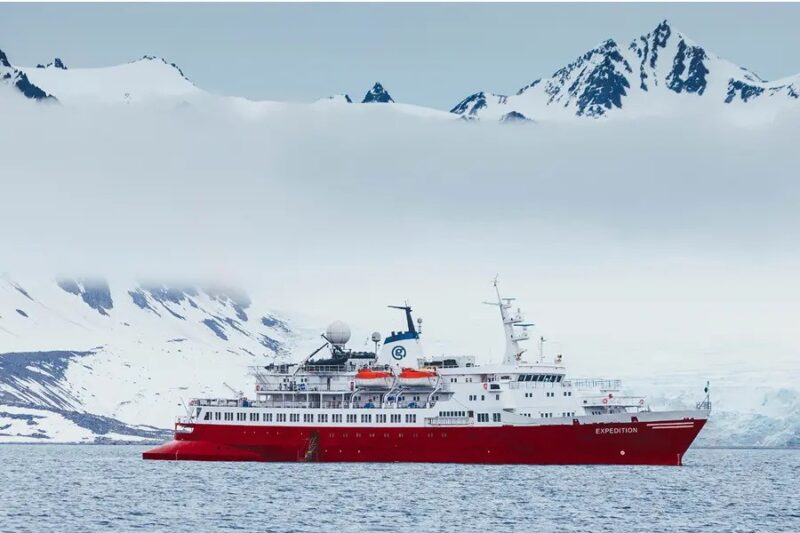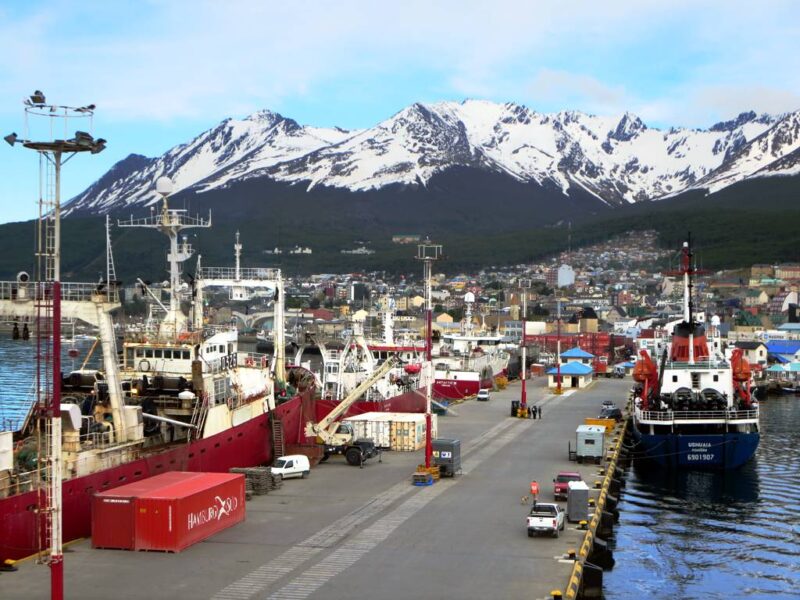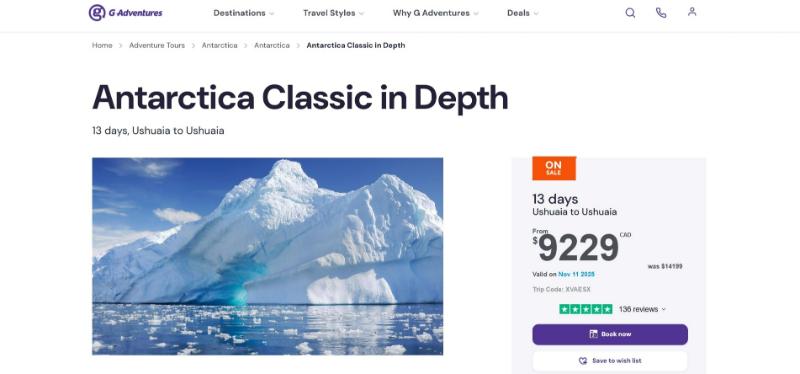So, you wanna go to Antarctica – where do you start?
I guess the first thing you gotta know is what options are out there.
Well, if you’re a scientist or researcher, you could possibly hitch a ride on a research ship and go down there to do some actual work.
The typical tourist, myself included, will have to look elsewhere.
There are day trip flyovers that leave from Australia which spend the day flying over the vast continent.
Yeah, it’s a cool way to see Antarctica but, then again, are you really seeing it?!?
If you really want to see it and plant your two feet on it and hang out with some penguins, well, you’re gonna have to board an expedition ship and sail down there.
Expedition ships

While expedition ships are technically cruise ships, they are not like your grandparents cruise ships.
The vast majority of ships making their way down to Antarctica are smaller 100-200 person vessels with limited amenities on board.
On each ship there are various options for cabins from full size suites to triple or even quad rooms where you’ll be bunking with others just like in a hostel dorm.
Now, while there are a handful of luxury ships sailing around down there, you know what, that’s all they do. Sail. They never make landfall. No snow under your feet and no penguins to play with.
There are a couple of reasons for that.
One is the logistics of it all. It’s hard to navigate a big ship down there and to get close to land.
But the second, more important reason, has to do with the strict rules put in place with regards to how many people can make landfall at a time.
Rules are rules

Back in the 1980s, tourism to Antarctica was still in it’s infancy with only about 2000 people visiting each year.
Even still, scientists and different governments came together to promote safe and responsible tourism to Antarctica.
In 1991 the IAATO (International Association of Antarctica Tour Operators) was formed and they came up with a set of rules to ensure Antarctica would be protected for years to come.
In the last 25 years tourism has (relatively) exploded. In 2000, less than 200,000 people had ever visited the continent and, now, in 2025, over 125,000 people will visit this year alone.
So, yeah, it was a good thing they came up with their rules.
In simple terms, the rules are meant to keep the land and wildlife pristine.
That means your trash (and waste) go back with you and that precautions are put in place to prevent the introduction of pests and foreign bugs.
And that you don’t upset the wildlife – in other words, don’t touch the damn penguins!
Oh, and there’s also a rule that only 100 people at a time can make landfall in any one area.
Which gets us back to why the smaller 100-200 person expedition ships are so desirable.
More excursions, less waiting.
Different cruise options

There are dozens of different cruises going to Antarctica each year from October to March as this is the summer season down there and the ice has broken up enough to allow passage.
The vast majority of vessels call Ushuaia their port of call. It’s on the very southern tip of Argentina at the very bottom of the South American continent.
From there, ships will sail for 2 days through the infamous Drake Passage before arriving in the South Shetland Islands and the Antarctic Peninsula.
Over the next few days it’s time to finally explore the continent!
While the ship will be docked out in the waters, each day there’s a morning and afternoon excursion onto land via zodiacs which are kind of like speedboats.
Then, it’s another two days through the Drake Passage and that’s it.
Now, there is another port of call as well and that’s for the “fly and cruise” option that some companies offer.
With this trip, instead of spending two days in the Drake Passage there and another two days back, you’ll board a 2hr flight in Punta Arenas in the southern part of Chile taking you to King George Island right on the edge of the Antarctic Peninsula.
Either way, both options will have you sailing around the Peninsula for a handful of days.
As for how many days, well, that’s another option available to you.
By far, the most popular itinerary offered is the Classic Antarctica trip which runs 11 days giving you 6 full days in and around Antarctica.
Another option out there is the Antarctica In Depth trip which is 13 days giving you a couple extra days to explore more parts of the continent at a slower pace.
If you really want to go explore, there’s also trips that will give you the opportunity to actually hike to the South Pole and do other kinds of cool stuff but, for those kinds of trips, you’re looking at $25,000 to $75,000usd.
My trip

So, what did I end up choosing?
At first I was going to choose the Classic Antarctica trip. It was the cheapest option and I figured 11 days was plenty long.
But, the thing is, I also wanted to do the extra activity of camping overnight on Antarctica.
It’s an extra excursion where you set up a tent and literally camp on the ice while the sun is up for 23 hours of the day.
I mean, just me and a couple dozen other people, spending the night sleeping side by side with penguins!
How could I not?
Yeah, it was a whopping $385usd ($539cad) to do it, but, damn, you only live once, right?
This activity, it turns out, was only available on the Antarctica In Depth trips.
It just so happened when I was looking up trips back in July, there was a Antarctica in Depth tour available at 35% off.
Instead of $10,000usd ($14,000cad), it was priced at $6,600usd ($9,200cad).
I mean, in my head I always thought the trip would cost me 10k (Canadian dollars) and here was this price tag (with the overnight camping addon) sitting here at just under it so I bit the bullet, pressed a button, and booked my trip.
Of course, there’s also the cost of getting down there, which you can read about here.
10 days to go!

